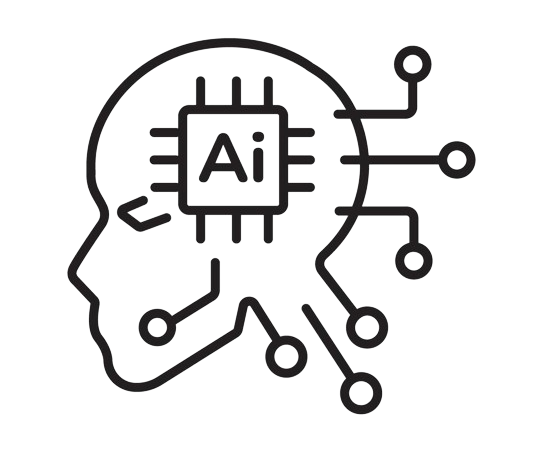Eigenvalues and Eigenvectors: Unlocking the Secrets of Linear Algebra
Eigenvalues and eigenvectors are fundamental concepts in linear algebra that provide deep insights into the structure of linear transformations. They have widespread applications in various fields, from engineering to machine learning. This guide will cover their definitions, methods of calculation, and practical applications, with a special focus on how these concepts can be applied to platforms like “AppsBubble” for data analysis and feature optimization.
1. Definition and Calculation of Eigenvalues and Eigenvectors
What are Eigenvalues and Eigenvectors?
For a square matrix \( A \), an eigenvector \( v \) is a non-zero vector that, when multiplied by \( A \), results in a vector that is a scalar multiple of \( v \). In other words:
\[ A \cdot v = \lambda \cdot v \]
Here, \( \lambda \) is the **eigenvalue** associated with the **eigenvector** \( v \). The scalar \( \lambda \) represents how the vector \( v \) is stretched or compressed during the transformation.
How to Calculate Eigenvalues and Eigenvectors
1. **Find the Characteristic Polynomial**: For a matrix \( A \), the characteristic polynomial is given by:
\[
\det(A – \lambda I) = 0
\]
Here, \( \det \) denotes the determinant, \( I \) is the identity matrix, and \( \lambda \) represents the eigenvalues.
2. **Solve for Eigenvalues**: Solve the characteristic polynomial for \( \lambda \). The solutions are the eigenvalues of \( A \).
3. **Find the Eigenvectors**: For each eigenvalue \( \lambda \), solve the equation:
\[
(A – \lambda I) v = 0
\]
to find the corresponding eigenvectors \( v \).
Example: Eigenvalues and Eigenvectors in AppsBubble
Suppose **AppsBubble** uses a matrix to model user interaction patterns. If the matrix is:
\[
A = \begin{bmatrix}
3 & 1 \\
0 & 2
\end{bmatrix}
\]
1. **Characteristic Polynomial**: \( \det(A – \lambda I) = \det\left(\begin{bmatrix} 3 – \lambda & 1 \\ 0 & 2 – \lambda \end{bmatrix}\right) = (3 – \lambda)(2 – \lambda) = 0 \).
2. **Eigenvalues**: Solving \( (3 – \lambda)(2 – \lambda) = 0 \) gives \( \lambda_1 = 3 \) and \( \lambda_2 = 2 \).
3. **Eigenvectors**: For \( \lambda_1 = 3 \), solve \( (A – 3I) v = 0 \) to get the eigenvector \( v = \begin{bmatrix} 1 \\ 0 \end{bmatrix} \). Similarly, for \( \lambda_2 = 2 \), the eigenvector is \( v = \begin{bmatrix} 1 \\ 1 \end{bmatrix} \).
These eigenvalues and eigenvectors could represent dominant user behavior patterns, helping AppsBubble optimize its features.
2. Diagonalization of Matrices
What is Diagonalization?
A matrix \( A \) is said to be **diagonalizable** if it can be expressed in the form:
\[
A = PDP^{-1}
\]
where \( D \) is a diagonal matrix containing the eigenvalues of \( A \), and \( P \) is a matrix whose columns are the corresponding eigenvectors.
Why is Diagonalization Useful?
Diagonalization simplifies many matrix operations, such as finding powers of matrices and solving systems of linear equations. It also provides a clear geometric interpretation of linear transformations.
Example: Feature Weighting in AppsBubble
Suppose **AppsBubble** wants to scale its features based on user engagement. If \( A \) represents the feature interaction matrix, diagonalizing \( A \) allows the platform to easily compute powers of \( A \) to predict future interactions and adjust feature weightings accordingly.
3. Spectral Decomposition
### Understanding Spectral Decomposition
Spectral decomposition is a process of expressing a matrix as a sum of rank-one matrices based on its eigenvalues and eigenvectors. For a symmetric matrix \( A \), the spectral decomposition is given by:
\[
A = \sum_{i=1}^{n} \lambda_i v_i v_i^T
\]
where \( \lambda_i \) are the eigenvalues and \( v_i \) are the corresponding eigenvectors.
Example: AppsBubble Performance Metrics
In **AppsBubble**, spectral decomposition could be used to decompose a user interaction matrix into components representing different behavioral trends. This decomposition helps in understanding the underlying patterns in user data, allowing for targeted improvements.
4. Applications in Dimensionality Reduction (e.g., PCA)
Principal Component Analysis (PCA)
Principal Component Analysis (PCA) is a technique used to reduce the dimensionality of data while retaining as much variance as possible. It works by finding the principal components (eigenvectors) of the covariance matrix of the data, which correspond to the directions of maximum variance.
1. **Compute the Covariance Matrix**: For a dataset \( X \), calculate the covariance matrix \( \Sigma = \frac{1}{n} X^T X \).
2. **Find Eigenvalues and Eigenvectors**: Compute the eigenvalues and eigenvectors of the covariance matrix \( \Sigma \).
3. **Transform the Data**: Project the data onto the principal components to obtain a lower-dimensional representation.
Example: Dimensionality Reduction in AppsBubble
Suppose **AppsBubble** has a dataset with numerous user interaction features. To identify the most influential features, PCA can be applied:
1. Compute the covariance matrix of user interaction data.
2. Find the principal components representing the main patterns in user behavior.
3. Reduce the data to these principal components, simplifying analysis and improving decision-making.
Benefits of PCA for AppsBubble
– **Feature Selection**: PCA helps in identifying the most important features influencing user behavior, enabling targeted feature development.
– **Noise Reduction**: By focusing on the principal components, PCA reduces noise in the data, leading to more robust analysis.
– **Efficient Visualization**: Reducing high-dimensional data to two or three dimensions makes it easier to visualize user behavior patterns.
Conclusion
Eigenvalues and eigenvectors provide powerful tools for understanding and manipulating linear transformations. Their applications, from matrix diagonalization to dimensionality reduction, are invaluable in fields such as data science, engineering, and app development. For a platform like **AppsBubble**, these concepts can optimize user interactions, enhance feature management, and streamline data analysis, leading to a more refined and efficient user experience.

